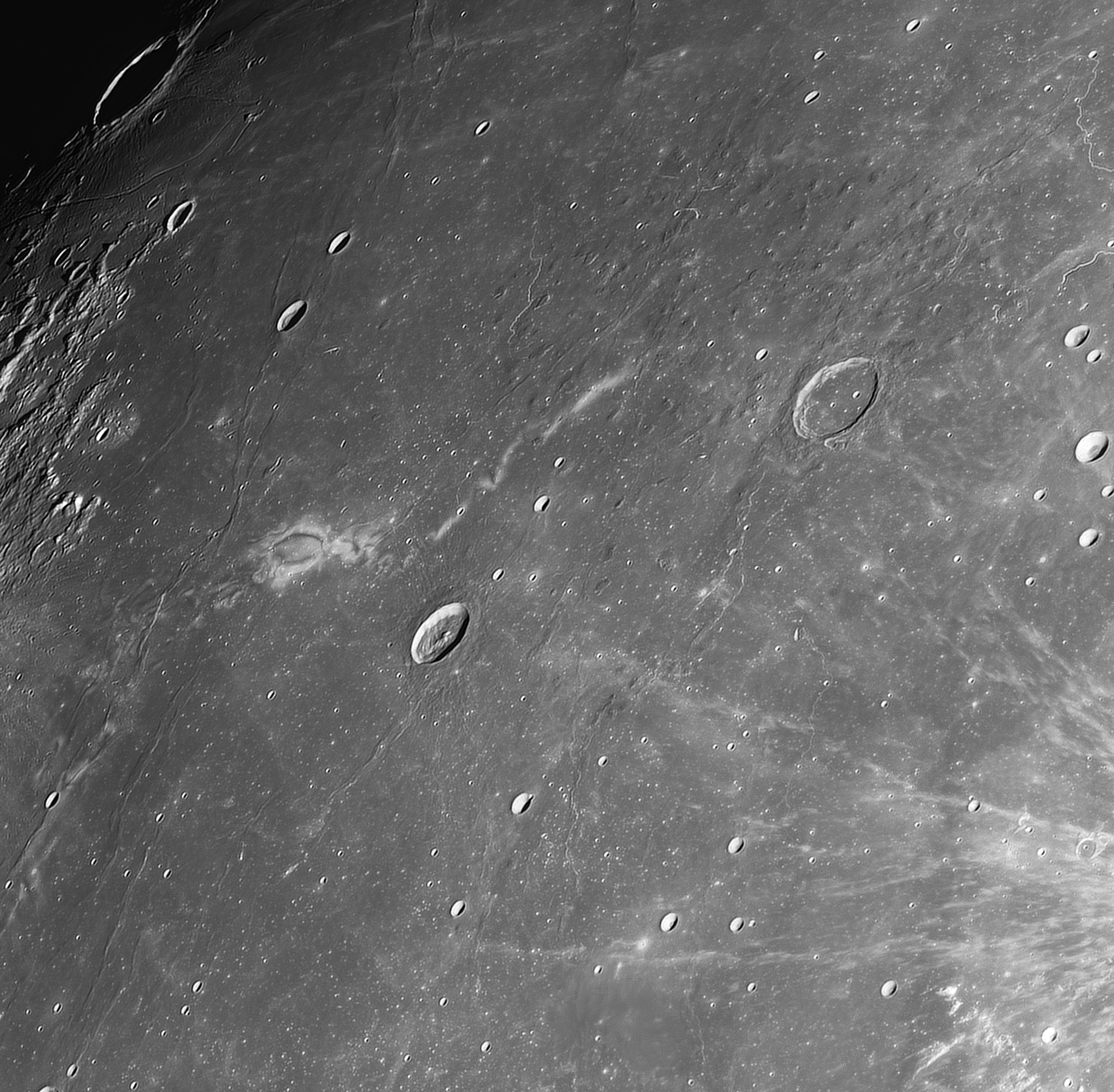Reiner Gamma è l’unico dei lunar swirl (vortici lunari) visibili dalla Terra. Dalla forma caratteristica, più unica che rara sul nostro satellite, agli osservatori visuali ricorda un girino o un pesce, e deve il suo nome alla vicinanza del cratere Reiner e alla somiglianza con la terza lettera greca minuscola, γ.
Reiner Gamma si trova in pieno Oceanus Procellarum ed ha un’alta albedo (brillantezza) che lo fa risaltare grandemente, anche all’oculare, sugli scuri basalti circostanti. Fu creduto essere un cratere, ma ora sappiamo che è piatto e sede di una forte anomalia magnetica. Proprio quest’ultima caratteristica ha fornito agli studiosi degli indizi sull’origine di questa peculiare formazione. In tempi recenti, Peter Schultz ha collegato i vortici ad impatti cometari, che spiegherebbero in un solo colpo entrambe le anomalie, di albedo e magnetica, che caratterizza questi soggetti affascinanti.
(ENG) Reiner Gamma is the only lunar swirl visible from Earth. With its characteristic shape, more unique than rare on our satellite, it reminds visual observers of a tadpole or a fish, and owes its name to the proximity of the Reiner crater and the resemblance to the third lowercase Greek letter, γ. Reiner Gamma is placed in the middle of Oceanus Procellarum and has a high albedo (brightness) which makes it stand out greatly, even at the eyepiece, against the surrounding dark basalts. Once believed to be a crater, we now know that it is flat and seat of a strong magnetic anomaly. This last feature has provided scholars with clues to the origin of this peculiar formation. In recent times, Peter Schultz has linked the vortices to cometary impacts, which would explain in one fell swoop both the albedo and magnetic anomalies that characterize these fascinating subjects.
Reiner Gamma area
(ENG) Reiner Gamma (just left of center) is visible in this image not far from the terminator (Reiner crater, about 30 km wide, is just to the east). Just east of center, the Marius crater with its domes is clearly visible, while the rays entering from the right are those of Copernicus crater.
